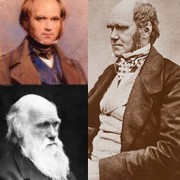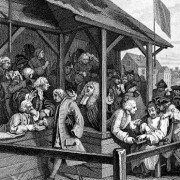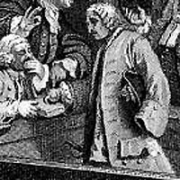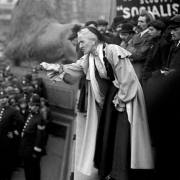MONTHLY BLOG 8, THE BRITISH LABOUR PARTY: VIEWED SOCIOLOGICALLY, ORGANISATIONALLY AND IDEOLOGICALLY
If citing, please kindly acknowledge copyright © Penelope J. Corfield (2011)
What follows is an account of the British Labour Party, organised not by chronology but in answer to three broad thematic questions: who support it? how is the Party organised? and what ideology does it represent?
My commentary was first presented as a short talk at the Battersea Labour Party in late April 2011, where it provoked some interest. So I decided to expand it into my May Discussion-Point – for people of all parties – and not just those who, like me, have stuck with the Labour Party, often with very mixed emotions. As I wrote, the text expanded into a short essay, which can be read in the attached pdf file.
In summary, the arguments run as follows:
Who? The Labour Party has never been just the party of the ‘workers’. Instead, it’s a coalition between the organised and unionised workforce plus the professional middle class and the left-wing intelligentsia. Clause IV of the 1918 constitution cheerfully defined them as ‘workers by hand or by brain’. (These are generalisations, which don’t apply to all individuals, needless to say).
Ranked against them is the rival alliance of the patriarchal upper class with the now predominant commercial middle class and the right-wing intelligentsia (again a generalisation), seeking votes from working-class Tories. Meanwhile, the unskilled working class, which is non-unionised, very poor, politically inactive, and to an extent electorally non-registered, tends to be neglected on all sides.
On this basis, the Labour coalition has continuing strength in its urban and industrial heartlands, tho these are vulnerable to economic erosion (cf the disappearance of the mining industry). And the core alliance between the ‘industrial’ and ‘political’ wings of the movement needs constant renewal.
How organised? Political parties on the left (and on the far right) tend to be more fissiparous and liable to splits than are those on the centre-right. Labour has long experience with rival parties. After all, it was not the first in the field. The Independent Labour Party began in 1892 and operated as a left-wing ginger-group within the new Labour Party (formed 1906). Then in the political crisis of 1931, the ILP split from Labour, which was hammered at the polls. Only after the Labour landslide of 1945 did the remaining ILP MPs join the mainstream, leaving the ILP to dwindle into a quiet demise in 1975.
After that, there was a quite different crisis in 1981. This time the split was on the Labour right. The four senior politicians (quickly named as the Gang of Four by the press) left to form a moderate Social Democratic Party, now merged into the Liberal Democrats. In the event, the scale of the secession was not nearly as great as was feared. But internal arguments between left and right, later updated as debates between Old and New Labour, long continued. Little wonder that party leaders always stress the need for internal concord: ‘Unity is Strength, Brothers’. Considerable harmony was achieved in the 1990s, when all were united against the Thatcher/Major governments.
Then Labour in power from 1997-2010 continued a top-down command style that discouraged internal party debates. It worked up to a point, but alienated too many among the rank-and-file. Labour’s individual membership post-1980 (when reliable records start) reached a peak in 1997 but by 2010 had fallen to less than half that level. Now the party is not feuding; but it does need some rebalancing between unity and constructive debate.
What ideology? Both in power and in its programmes, Labour has tended in practice to be pragmatic. The remark ‘Socialism is what a Labour government does’ – regularly attributed to Herbert Morrison – marked an aversion to ideological purity that was characteristic, although not universal, among Labour’s leaders. However, political parties must have some sort of political compass. Debates cannot be avoided, both about aims and best means of implementation.
Two prominent strands within Labour thinking can be defined as the socialist and the social democratic, although actual policies have often blurred the differences. The first, sometimes also known as Old Labour, wanted radical redistribution of wealth and power, as well as public ownership of the ‘means of production and distribution’. (But, unlike the communist parties, this tradition did not advocate a one-party date). The second, or social democratic tradition (although not using that name, especially after the Gang of Four split) has also endorsed redistribution as an aim but has always been much more favourable to the market economy. In recent times, the New Labour formulation has become predominant, with its mantra of ‘choice’. That seemed to move away from state control, especially in the economy. On the other hand, the Blair/Brown governments proved to be increasingly fond of centralised direction, with attempts at micro-managing via the unpopular targets culture almost all aspects of central and local administration, and the work of many arms-length institutions as well. That contradiction generated more than a little tension.
Today things are moving on from the disputes between Old and New Labour. The first tradition has lost conviction; the second has lost momentum. People now want to debate, without tearing the Party apart. New recruits want action, not philosophy seminars. There is much to do. In its first century, Labour has waxed and waned and waxed again, in the characteristically episodic manner of left-wing movements. Between 1910 and 2010 it was in government for no more than 33 years.1 But Labour has helped to define British politics, both in and out of power. Above all, its mid-twentieth-century creation of the Welfare State was truly monumental. And, in a new guise in a new century, there is much yet to do …
1 This calculation is a crude year-count, totalling Labour governments in 1924, 1929-31, 1945-51, 1964-70, 1974-79, and 1997-2010 – but excluding Labour’s contribution to the wartime coalition 1940-45.
For further discussion, see Twitter
To read other discussion-points, please click here
To download Monthly Blog 8 please click here







